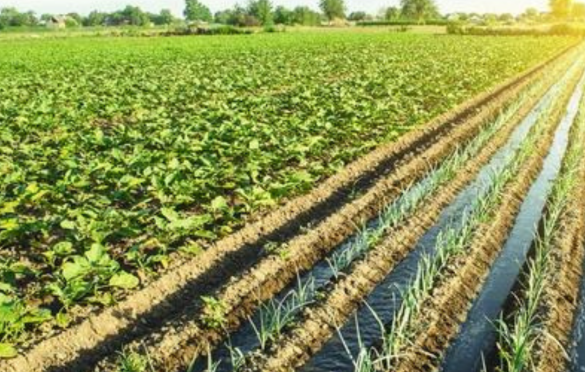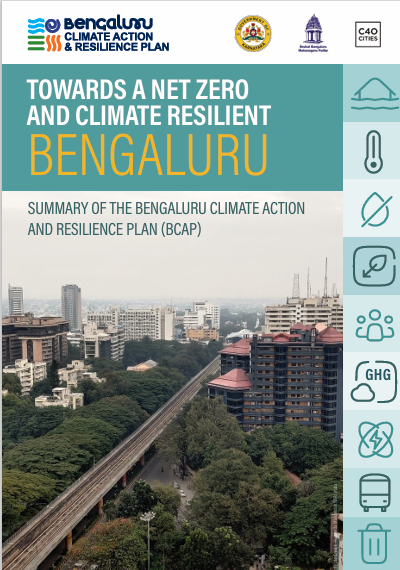Indian farmers face challenges with poor soil health and declining profits. Selling carbon credits could provide a solution to these issues
The Energy Conservation (Amendment) Bill, 2022 and Its Implications for Indian Farmers
The Energy Conservation (Amendment) Bill, 2022, introduced and passed in the Lok Sabha on August 8, aims to develop the domestic carbon market. While the bill primarily targets the renewable energy sector, it has the potential to indirectly benefit the country’s farmers as well.
Approximately 55 percent of India’s population is engaged in agriculture, which is heavily reliant on natural resources such as soil and water. The climate crisis, along with its associated impacts like land degradation, market price volatility, and rising input costs, significantly affects the sustainability of agricultural production and the livelihoods of those dependent on it.
The Importance of Improving Soil Health
Since the Green Revolution, the intensive use of fertilizers and pesticides has depleted soil carbon levels, leading to widespread soil degradation. Estimates suggest that up to 30 percent of India’s total geographical area is degraded, with nearly half of this being agricultural land, especially unirrigated or rainfed areas.
Soil health is closely tied to its organic matter, which includes elements like carbon, nitrogen, and phosphorus. About 50 percent of soil organic matter is carbon, making soil carbon measurement a reliable indicator of overall soil health.
In his 2017 paper, Australian microbiologist and climatologist Walter Jehne highlighted that the soil carbon sponge—composed of mineral and organic detritus and air—enhances the soil’s capacity to absorb and retain rain, improves nutrient access, and supports diverse microbial processes. Low soil carbon levels reduce the soil’s ability to retain water, increasing susceptibility to erosion and runoff, and exacerbating flood and drought cycles. Carbon sequestration can elevate soil carbon levels, simultaneously reducing atmospheric carbon dioxide and benefiting agriculture.
Practices to Restore Soil Health
Farmers can adopt several regenerative agriculture practices to enhance soil health by increasing biomass and reducing carbon loss from the soil:
- Cover Cropping: Keeping the land covered year-round.
- Residue Mulching: Recycling biowaste into the soil.
- Using Manure, Compost, and Biofertilizers: Enriching the soil with organic matter.
- Improved Crop Rotations and Intercropping: Diversifying plant species to enhance soil health.
- Reducing Flood Irrigation and Chemical Use: Minimizing soil disturbance and chemical dependency.
These practices improve soil carbon content over time, leading to increased yields. However, farmers may need incentives to adopt these practices due to their initial time and cost investments. Trading carbon credits in voluntary carbon markets can serve as a motivating factor.
Carbon Credit Monetization as an Incentive
Improving soil health is intrinsically linked to increasing soil carbon levels, requiring ongoing monitoring and incentivization. Carbon credits represent quantities of greenhouse gases kept out of the atmosphere or removed from it, with one carbon credit certifying the removal of one metric tonne of carbon dioxide.
Advancements in remote sensing and AI allow the prediction of soil carbon levels via satellite data, facilitating the calculation of carbon credits. Companies and governments purchase these credits to meet climate commitments.
Benefits of Participating in the Carbon Market
For farmers, the direct benefit of participating in the carbon market is receiving cash incentives for the carbon sequestered in their lands. At current market rates, a farmer can earn approximately INR 780 per carbon credit, with potential higher rates from large corporations purchasing carbon credits directly. Farmers practicing regenerative agriculture can sequester one to four carbon credits per acre.
The indirect benefit is the enhanced soil health due to increased soil carbon, leading to better water-holding capacity, reduced soil density, improved water infiltration, increased nutrient availability, and decreased soil surface temperature.
Implementing Carbon Credit Programs for Farmers
Nonprofits and farmer producer organizations (FPOs) can assist farmers in benefiting from carbon credit programs by:
- Promoting Regenerative Practices: Encouraging farmers to adopt practices that increase soil organic matter and carbon, with initial support and guidance.
- Partnering with Agri-Tech Companies: Linking with companies like Boomitra, Nurture.farm, CarbonX, and Carbon Count to list and trade carbon credits.
- Third-Party Verification: Ensuring projects are verified by agencies such as Verra, enabling the sale of carbon credits and distribution of incentives to farmers and FPOs.
Addressing Challenges
Several challenges need to be addressed for effective implementation:
- Verification and Accounting: Ensuring accurate measurement of soil carbon increases and proving additionality.
- Time Frame for Incentives: The process from project listing to receiving cash incentives can take 8-12 months, which may be challenging for farmers.
- Awareness and Education: Increasing awareness among farmers about the benefits of carbon credit programs.
Future Outlook
With global climate commitments, the carbon credit market is likely to evolve, offering significant benefits for farmers. The integration of carbon credit markets with agricultural practices can lead to widespread adoption of regenerative agriculture, aiding in climate change mitigation and promoting sustainable farming.
China’s recent launch of its own carbon trading market highlights the potential for similar initiatives in India, which could act as catalysts for achieving climate goals and promoting regenerative agriculture through carbon-led incentives.



Leave a Reply